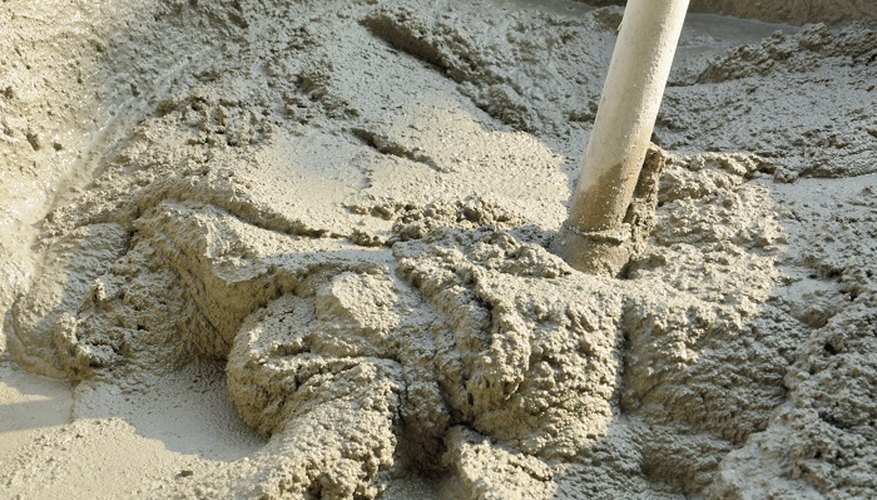Refractory cement is made to withstand high temperatures that regular cement can't handle. It has many microscopic air pockets that provide insulation, which prevents it from cracking. Refractory cement is used in furnaces and outside fireplaces, as well as in commercial and industrial settings. Firebrick is refractory cement already formed. Refractory cement can be made from raw materials or purchased as a dry mix. One of the ingredients is masonry cement, which includes sand as a waterproofing agent and other ingredients that make it suitable for high-temperature uses. All the ingredients can be found at your local builders' merchant.
- Refractory cement is made to withstand high temperatures that regular cement can't handle.
- One of the ingredients is masonry cement, which includes sand as a waterproofing agent and other ingredients that make it suitable for high-temperature uses.
Lay a thin metal or plastic sheet on a smooth ground surface, or you can mix the refractory cement on a clean, smooth concrete surface. Put 1 1/2 shovels of masonry cement and two shovels of sand on the prepared surface.
- Lay a thin metal or plastic sheet on a smooth ground surface, or you can mix the refractory cement on a clean, smooth concrete surface.
- Put 1 1/2 shovels of masonry cement and two shovels of sand on the prepared surface.
Add 1 1/2 shovels of perlite, which is a volcanic mineral. Mix all the dry ingredients together. Fold the dry mixture from the bottom of the pile until it is thoroughly mixed.
Push the shovel into the centre, creating a hole in the centre of the mixture. Pour 1 litre (2 pints) of water into the hole. Mix as you did with the dry mixture. It will become a semi-dry, crumbly texture. Use additional water if necessary.
Put two shovels of fireclay into the mixture. Continue adding water to the mixture until it is workable, approximately 4.5 litres (1 gallon) in total. When the mixture is the right consistency, you can ball the mixture up like a tennis ball, throw it up in the air and catch it without it falling apart. If the mixture is too runny, add more dry ingredients in the ratio 1 1/2 parts masonry cement, two parts sand, 1 1/2 parts perlite and two parts fireclay.
TIP
Lay a piece of plastic sheeting over the cement when you are finished and mist the plastic with water. This will prevent rapid water loss on the edges and surface. Allow it to dry for 24 hours, then remove the plastic cover and air dry for another 48 hours without direct sunlight. It will take approximately three weeks to fully dry, depending on the weather.
Start with small fires at first and then gradually increase the temperature. This will prevent the cement from cracking.
WARNING
Do not mistake masonry cement for Portland cement. Portland cement explodes when heated to high temperatures.
